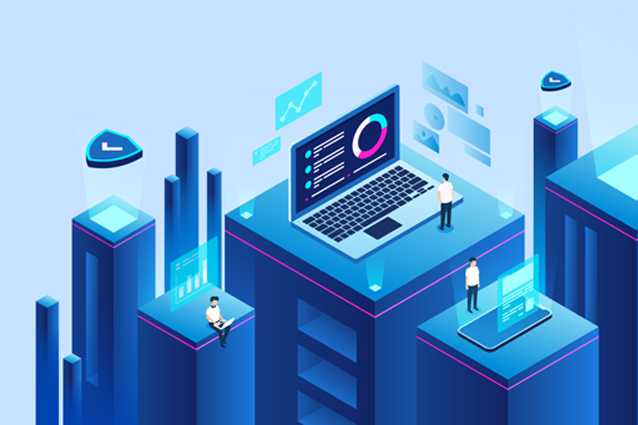The Role of DaaS in IT Infrastructure and Operations Innovation

If you look closely at those trends, you’ll notice that Desktop-as-a-Service, or DaaS, is a clear solution for operationalizing each of them. Although Gartner doesn’t explicitly point to DaaS (which it has analyzed separately) as a major enabler of innovation in IT infrastructure and operations, it’s clear enough if you read between the lines that DaaS goes hand-in-hand with the future of IT.
To prove the point, let’s walk through each of the six trends that Gartner has identified as being at the core of IT infrastructure and operations innovation, and discuss how DaaS fits into each of them.
1. Anywhere operations
The first trend, which Gartner calls anywhere operations, reflects the need of IT organizations to deploy infrastructure that allows employees to work from anywhere, at any time.
No infrastructure solution achieves this goal better than DaaS. By providing employees with secure desktop environments that they can access from any location with an Internet connection, DaaS lays the foundation for anywhere operations – and, by extension, helps businesses to take full advantage of remote work models.
2. Optimal infrastructure
According to Gartner, businesses are increasingly seeking “optimal infrastructure,” is aimed at “ensuring strong returns for infrastructure investment.”
Although desktop infrastructure is only one component of overall infrastructure spend, DaaS is the obvious solution for optimizing the cost of desktop systems. With DaaS, businesses no longer have to invest in costly on-premises desktop hardware, or the high-effort maintenance operations required to support it. They can simply spin up desktop systems in the cloud on demand.
What’s more, DaaS also lets businesses shift from a CapEx-focused infrastructure spending model to an OpEx model, which brings even more agility to infrastructure budgets.

3. Operational continuity
Gartner says that “IT services must be continuous, regardless of external factors.” That means IT teams need infrastructure that can deliver a flawless, zero-downtime experience.
Achieving this goal with conventional desktop infrastructure is very difficult. Local systems are prone to hardware failure, not to mention issues like the risk of data loss due to failed hard disks, inaccessibility during power outages and so on.
With DaaS, however, operational continuity becomes baked into desktop infrastructure. DaaS systems remain operational – and the data and applications hosted on them remain safe – regardless of what happens to local offices or the devices that employees use to access cloud-based desktop systems. Although it’s still a best practice to back up DaaS systems, the risk of downtime – and, by extension, disruption to business continuity – is fundamentally lower when companies shift to DaaS infrastructure.
4. Core modernization
According to Gartner, modern IT organizations are investing in “core modernization,” which means evolving infrastructure to take advantage of newer technologies.
On the server side of the equation, those technologies may involve innovations like containers and microservices. But from a desktop infrastructure perspective, they should focus on the type of enhancements that DaaS alone can deliver. DaaS brings the same agility, cost-effectiveness and reliability improvements to desktop infrastructure that containers and microservices offer to server-side workloads.
5. Distributed cloud
Distributed cloud, which Gartner defines as “the decentralization of cloud resources,” is another trend that can be operationalized from the desktop perspective through DaaS. With DaaS, local, centralized desktop systems are replaced with flexible virtual desktop environments that can be hosted in any cloud data center – a key advantage for businesses that need to keep data and applications in a specific region in order to meet compliance or privacy goals.
At the same time, however, DaaS makes it easy for IT teams to centralize administration by managing all desktop environments through a central platform. They get the performance and reliability benefits of distributed infrastructure while also enjoying the administrative advantages of centralized management tooling.
6. Critical skills vs. critical roles
The final major infrastructure and operations trend that Gartner points to, which it describes as a shift from “critical roles” to “critical skills,” involves a focus on ensuring that IT practitioners have the broad set of skills necessary to do multiple jobs, rather than designating specific roles for specific tasks.
While this trend involves personnel more than infrastructure itself, businesses that shift to DaaS will find it easier to take a skills-based approach to infrastructure management. The reason why is that with DaaS, desktop infrastructure becomes more consistent and easier to administer. Instead of having to support hundreds of unique desktop computing devices spread across a wide geographic area, IT teams can manage virtual desktop instances running on a standardized, centralized cloud platform.
In this way, DaaS makes desktop support skills easier to obtain, and it significantly lowers the risk that the departure of certain IT staff members will leave businesses unable to support certain systems.
Conclusion
From enabling remote work, to improving infrastructure ROI, to simplifying infrastructure support operations and beyond, DaaS plays a central role in helping businesses to innovate with regard to IT infrastructure and operations. As businesses seek to build better and better IT infrastructures by following the trends Gartner identifies, DaaS should be at the core of their investment strategy.
